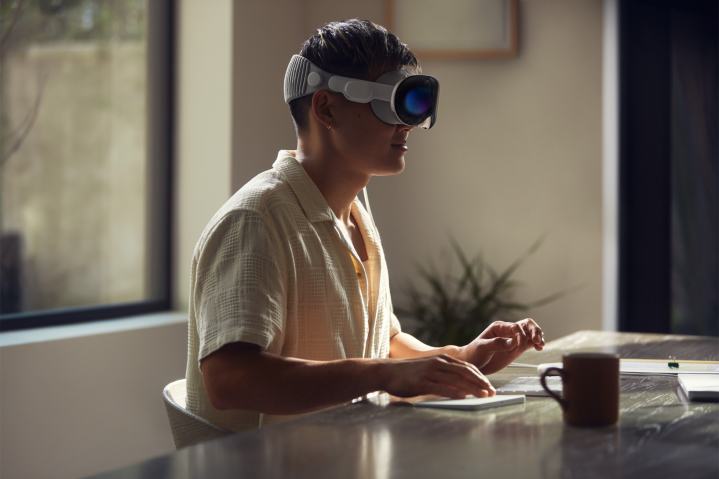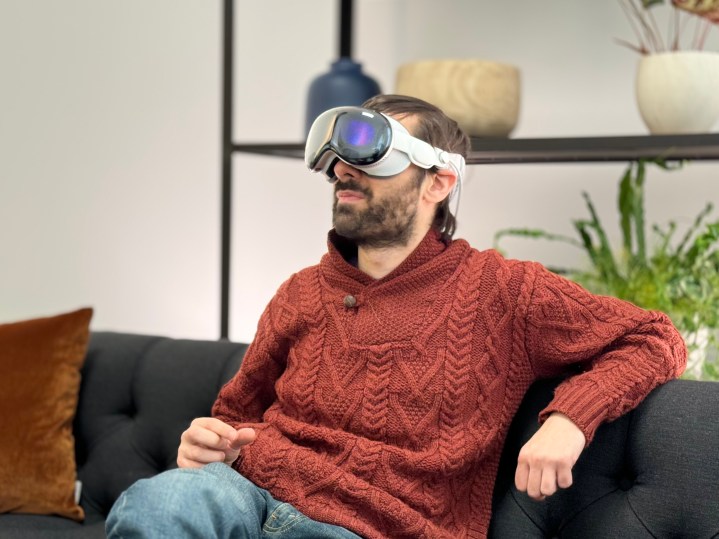
We’ve long known Apple’s Vision Pro headset was going to be an expensive device, and now that pre-orders have opened on Apple’s website, we’ve got a better idea of how truly costly the product is. We took a quick look, and if you max out every option, you can spend as much as $4,547 for a single Vision Pro — and that’s before adding any accessories.
One of the ways you get to that price is by equipping the Vision Pro with 1TB of storage. There are two other storage options: a 256GB version that costs $3,499 and a 512GB option priced at $3,699.
Then you get to the Vision Pro’s lenses. Standard, non-prescription “reader” lenses are an extra $99, while prescription inserts are $149. After that, you can add two years of AppleCare+ for an extra $499. If you include all of the most expensive options listed above, you can end up spending $4,547 (or $4,048 without AppleCare+).
Then there are the accessories. Apple is offering a hard travel case for $199, an extra Vision Pro battery for $199, a Belkin battery holder for $50, and a lot more.
All in all, $4,547 is a huge amount to spend on a single headset, and with a price like that, Apple is unlikely to sell huge numbers of the Vision Pro. Still, just 15 minutes after the device launched, delivery times for the 1TB model had already slipped from their original February 2 date to February 3 for in-store pickup and February 6 for delivery, indicating a high level of demand.
Expensive or overpriced?

Many people will say Apple’s headset is way too overpriced compared to the rest of the best VR headsets. But while it’s undoubtedly expensive — especially when you pick all the top-end options — Apple will tell you that the cost reflects the quality.
As we discovered when we went to CES 2024, there’s nothing else close to the Vision Pro, either available right now or coming soon. It’s packed with a powerful chip, high-resolution lenses, and a ton of sensors. It’s no surprise that a headset that costs a few hundred dollars can’t compete with the Vision Pro.
That’s all well and good, but Apple might still struggle to sell a lot of Vision Pro units when it costs as much as it does. While the company is rumored to be working on a cheaper model, it’s still nowhere to be seen, meaning people on more restricted budgets have no option from Apple.
It will be interesting to see how sales go over the next few days. Apple analyst Ming-Chi Kuo has predicted Apple has produced just 60,000 to 80,000 units for the launch, which could sell out quickly. Whether Apple can keep up that momentum over the long term will be key to the product’s success.
Specs confirmed

Aside from the price, Apple’s website now lists a plethora of key Vision Pro details that were previously unknown. For instance, the official specs page now notes that the Vision Pro has an M2 chip with an 8-core CPU, a 10-core GPU and a 16-core Neural Engine. There is also 16GB of memory as part of the chip. That’s alongside the R1 chip that handles incoming data from the microphones, cameras and sensors.
Speaking of which, the Vision Pro has a 6.5MP 3D camera with an f/2.00 aperture and 18mm focal length. The list of sensors includes two main cameras, six outward-facing tracking cameras, four inward-facing cameras, a TrueDepth camera, a lidar scanner, four inertial measurement units, a flicker sensor, and an ambient light sensor.
The micro-LED display, meanwhile, boasts 23 million pixels and supports refresh rates up to 100Hz. It hits 92% of the DCI-P3 color gamut. Despite those impressive specs, video mirroring — where you send a video feed of what you’re seeing through the headset to another device like a Mac or Apple TV — is limited to 1080p.
Finally, we’ve also learned the weight, which comes in at 600 grams to 650 grams. Apple says the final weight depends on the Light Seal and headband configuration. The battery weighs 353 grams, although this is designed to be kept in your pocket so it doesn’t contribute to the overall headset weight.
With all this new information, it’s clear that the Vision Pro is designed to be an incredibly high-end device. That goes a long way to explaining its price, although it doesn’t make it any less painful on your finances.
Editors' Recommendations
- 5 headsets you should buy instead of the Vision Pro
- Apple has backed itself into a corner
- The Vision Pro is already in trouble. Here’s how Apple can turn the tide
- This new VR headset beats the Vision Pro in one key way and is half the price
- MacBook Pro 16 vs. MacBook Pro 14: The important differences



